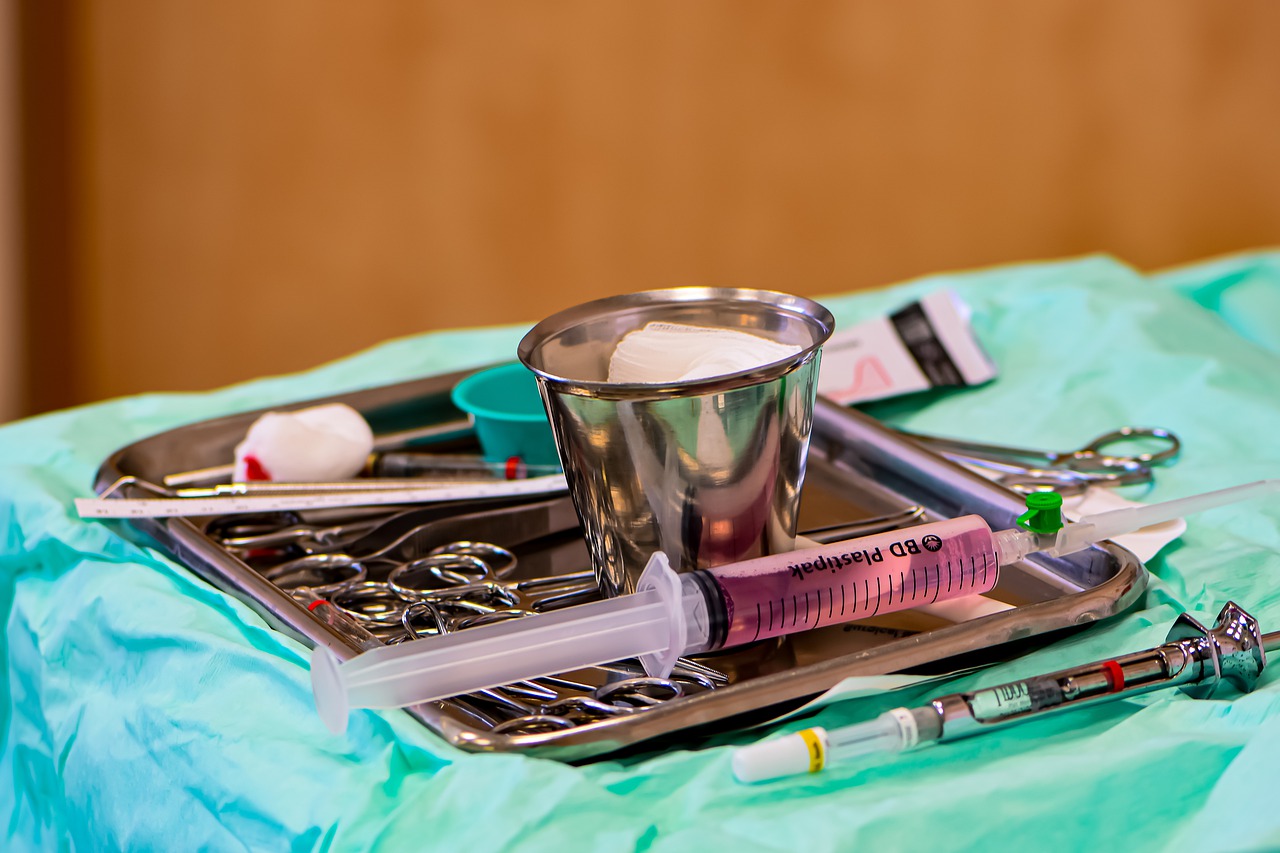What Are Surgical Trays?

A personalized procedure tray, or CPT for short, is a collection of medical equipment designed to provide disposable items for use during surgery. They are typically designed and configured for your specific procedural needs.
Instrument trays protect medical instruments in various ways. They hold the instruments during autoclaving and protect them from damage. Trays are useful for transporting medical instruments from one location to another. They are also used to store surgical instruments, keeping them tidy when not in use and making inventory easy.
From simple trays to special trays
A tool tray might be a standard stainless steel tray, but it’s the simpler version of this handy item. The standard version is a solid stainless steel deck, available in a variety of sizes and with two basic configurations including flat and domed. However, there are many specialty trays designed for specific types of medical supplies.
Custom surgical trays are categorized by type based on their usefulness in particular settings. They have drastically increased efficiency in operating rooms because the bins have already been designed with the right equipment. Bespoke surgical trays are synonymous with comfort and adaptability. By categorizing surgical trays, surgeons can choose the style of the surgical tray that is most appropriate for a particular surgical procedure before surgery begins. Below is a list and brief description of the different types of custom surgical trays that are commonly available.

Types of custom surgical trays
1. Single use
Disposable surgical trays are designed to be used once and then thrown away. They are often the best type of surgical tray for procedures performed outside of the operating room.
2. Kits to use
The take-away kits are mobile and easy to transport. They include primary medical devices with guaranteed hygiene.
3. Operation trays with supports
Surgical trays with braces are ideal for most surgeries performed in the operating room. With the stand built into the tray, it’s a simple process to set up and you have the tools you need at your fingertips.
4. Perforated instrument tray
Custom-made surgical trays are available with perforations that allow excess moisture to drain. Perforations increase steam exposure during sterilization procedures.
5. Covered and stack-able bins
Custom surgical trays are designed for efficient storage and are easily stack-able to simplify inventory and accessibility. Hospitals can determine the best trays for their staff and can request surgical trays designed for immediate use, or choose metal, plastic, or stainless steel trays.
Components of the Custom Surgical Tray
There are many types of surgery, and depending on the type of surgery, the components of the custom surgical trays vary accordingly. Some single use parts are considered essential for all custom trays and include:
• Bowls
• Attachment
• OR sheets
Hospitals and doctors are free to choose add-ons from their custom trays, here are some examples of custom bins that also include specialized components:
• Surgical skin not used to close skin wounds during surgery or to bandage or remove parts of the intestines or lungs.
• Cardiac catheter, a tube used in a catheterization procedure to diagnose and treat cardiovascular problems.
• Nasal oxygen catheter used to distribute oxygen evenly through perforations
• Process forceps used to close bleeding blood vessels
Many surgical tray companies have developed standard custom trays to meet the needs of a variety of facilities. The trays can be used as a starting point and can be changed as directed by the physician’s requirements. Standard custom trays contain all surgical equipment and accessories required for the procedure. Special bins can be ordered for younger and smaller patients with the correct size needles and custom drapes. Standard custom trays include:
• Trays for angiography
• Biopsy trays
• Tray curtains for interventional radiology
• Pacemaker trays
• Peripherally inserted central catheter (PICC) insertion trays
Ear Nose Throat Trays – Contains a range of consumables for performing sterile ENT procedures or surgeries
Eye trays – Includes a range of supplies for eye surgery or procedures
Perforated trays: Holes ensure better sterilization and drying of instruments
Mesh trays – Net allows unobstructed airflow, ensuring complete sterilization of medical supplies and equipment
- Hospital or Drying Trays: Shallow tray design allowing medical staff to select the required medical instrument at a glance
Versatile and practical
The different trays are designed to be versatile in use. For example, stainless steel trays can be autoclaved, instrument storage units or units for safe transportation of instruments when the lid is in place. They are practical in several ways.
Available in different sizes
Seamless structure for most products for easy cleaning
Flat lids allow you to stack tool trays
Sustainable
Lid (stainless steel) instrument trays = tray, size 20 x 15 x 2 inches.
Instrument trays with lids (stainless steel) = tray, size 9 x 15 x 2 inches
Instrument trays with lids (stainless steel) = tray, size 25 x 20 x 2 inches.
Sterilization methods
One of the reasons personalized trays have become so popular in medicine is that they can be used immediately; for this they are prepackaged and pre-sterilized. However, the world is not always ideal; and adequate sterilization can be complicated and must be comprehensive. Meanwhile, custom trays certainly have a high usability coefficient and quickly became a preferred choice due to the ubiquity of practices. In addition to this method of equipment maintenance, the CDC specifies two primary ways that trays are sterilized:
This article provides a quick overview of the two sterilization methods and then explores how sterilization in combination with custom trays can really provide the best possible scenario for ongoing surgeries. What good are the custom-made trays if they are not in stock and there is no shipping for a month? Custom trays are affordable and save lives, but unless there are other means, they can eventually become a narcotic.
Steam sterilization
Simply put, steam sterilization is preferred. It is environmentally sustainable, clean and efficient. Heat is one of the most reliable sterilization. Since the heat is moist with the steam, it also helps preserve the equipment during sterilization. Steam sterilization is non-toxic and relatively inexpensive. In addition, it kills harmful microorganisms very quickly and is also able to kill fungi or fungal spores. This method also penetrates the tissues without destroying them and can allow sterilization. The only downside is that the process has a history of burns and lubricant corrosion; especially with regard to hand pieces used in dental work. It can also reduce the light output of some devices such as laryngoscopes. Steam sterilization is achieved through direct exposure of items requiring steam sterilization at a temperature necessary to adequately threaten microbial life. Four main elements define this method: pressure, temperature, time and the steam itself.
Immediate sterilization
Flash sterilization is temperature and pressure. The original definition was that a discarded item should be held at one hundred and thirty-two degrees Celsius for three minutes at a pressure of between twenty-seven and twenty-eight pounds. This requires a so-called gravity displacement sterilizer. Time will vary depending on the size of the sterilizer purchased and the item to be sterilized. This process can be very efficient, but it is complicated and certainly involves costs, which can make custom trays even more effective.
Because combining all three is the best approach
Custom trays, steam sterilization and flash sterilization are great ways to keep your practice clean. But if you only have one method or another, you have no protection from the worst to the worst. What if you don’t use custom trays and the steamer breaks down? Well, you have instant sterilization. But what if both machines break down on the same day due to a power surge causing a shortage of fuses that no one can find in the middle of the day? In such a scenario you could lose lives. That said, if you have custom trays anywhere on the property, that’s not a problem. But you can’t rely on personalized dishes either; What if a shipment is delayed? So in an ideal world, a doctor’s office performing surgery will use a combination of custom trays, steam sterilization, and flash sterilization procedures.







Reviews
There are no reviews yet.